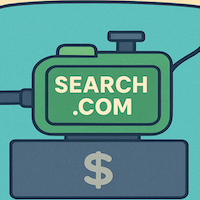(Promo) Yule Flip Peppermint Chip. What’s that? It’s the new Blizzard flavor from Dairy Queen. Granted, some of us missed it. But a million Dairy Queen fans were tipped off this month about the beverage.
How did they get that news before the drinks were even in the stores?
Through the chain’s 20-month-old e-mail newsletter.
Dairy Queen has learned what many brand marketers now know: that newsletters — or e-zines — are an effective communications tool.
For one thing, they have low development and transmission costs. And they’re easy to measure. Finally, the information collected at registration can be used to create versioned editions.
But the best thing for brand marketers is that they are a fine vehicle for dispensing promotions, a fact that Dairy Queen only recently discovered.
The chain thought it was doing a good job with its e-zine until subscribers began grumbling. They said: “Thanks for the e-mail, but we want — and deserve — a discount.” Dairy Queen quickly complied. Its newsletter now includes coupons for any Blizzard beverage, and will do so through February.
And the buy-one-get-one free offer is hyped in the subject line in an effort to bring up the open rate even higher than its usual 38%. But that’s only the start.
“Next year we will be really dialing up with rewards and incentives, coupons, contests and sweepstakes, so they feel like they’re getting more,” say Patty Halvorson, director of national promotions for International Dairy Queen, Minneapolis.
Six Flags theme parks has also learned the power of newsletters, but in the reverse way. It had been offering ticket discounts on its Website, but no details about park events. And customers were unhappy.
So the company launched an e-zine, and created different versions based on its 13 U.S. locations. They now have millions of subscribers.
Mailed to subscribers within a certain radius of each park, the e-mails focus on happenings at specific locations. And, yes, discounts are offered.
Moreover, Six Flags has several niche newsletters including one tied to its Carrothead Club for kids, featuring puzzles, photos and carrot recipes.
But e-mail newsletters are good for more than that.
Procter & Gamble improved “hundreds of products” by inviting its subscribers to comment on them, says Paul Beck, executive director, interactive marketing and advertising for Ogilvy Interactive Worldwide.
How? The brand poses questions and waits for feedback, then it follows up by telling the customer what it did with the input.
“By engaging the audience about the brand, you’ll get insights on how to improve products while [encouraging’ advocacy,” Beck says. “People who feel connected to a product or service are more likely to recommend it.”
And Newcastle Brown Ale uses its e-zine to find out how customers engage with its product.“People on your mailing list are the strongest ambassadors for your brand,” says Bill Wetmore, customer marketing director for the brewer. “We want to use them as counsel.”
And what do readers get out of the newsletter? “These people are probably more passionate about the brand,” Wetmore says. “We want to make them feel that they have the inside scoop as to what we’re up to.”
And promotions? Dairy Queen can’t do enough of them. For example, the chain launched a campaign in October to snare its one millionth Blizzard Fan Club member. Membership then stood at 902,000.
How long did it take to hit the mark? Seven days. Moreover, customers made 40,000 referrals, delivering 100,000 new members, Halvorson says.“They are very loyal and avid customers,” she says. “It’s been very interesting to witness this.”
Getting started
Okay. We see we’ve convinced you. But you may be wondering how to get started in this game.
It’s simple, really.
First, you face the challenge of getting subscribers, no easy task in this day of inbox glut.
For its part, Newcastle Brown Ale has built its 50,000-name sub list largely through its Website. The site offers details about the e-letters and a registration page. And how does Newcastle drive people to the site? Through a sweepstakes supported by online media buys.
In a recent test to determine the true impact the media buys had on response, Newcastle sent an e-mail blast to promote its Best of Both Worlds sweepstakes, but did not support the effort with an ad. About 15,000 people registered, the largest response to an online sweepstakes program without media support.
But there are other ways to drive subs, and some of them are pretty sexy. Some examples:
Print ads. Sephora may be among the first to try this. It ran a full-page ad in the October issue of “Oprah” magazine, showing beautiful women in gold makeup. The copy:
“Golden Opportunity!
“Content is King
“Sign up for sephora emails to score:
“deluxe sample offers
“a first look at new beauty
“seasonal beauty trends.”
“This ad was a great stride forward for e-mail,” says Jeanniey Mullen, senior partner, senior director of e-mail marketing for Ogilvy One Worldwide, New York.
Social networking. Brands are already injecting themselves into the networks with sponsorships and videos. But sites such as YouTube.com and Gather.com can also be used to drive subscriptions. Beck calls this unchartered territory.
This idea calls for being in the right place at the right time. For example, a brand rep can join into an ongoing conversation related to a specific product or activity — cooking or traveling, say — and encourage people to sign up for a related newsletter.
“If the conversation is already happening, this is a much more natural way of acquiring new customers” Beck says. “Brands who are willing to take the risk to work within social networks are the ones that are already giving it a try.”
IMN, a Waltham, MA-based e-communications company, has started a pilot program that will enable clients to tap social media to create newsletters based on specific lifestyles. These, in turn, would be tied to products sold at retail. For example, a snowboarder might get an article with a video. “The newsletter may not look like your father’s newsletter, it may look a lot more like a television program at some point,” says CEO David Fish.
Search. Anyone using search had better have a dynamic landing page. And that space should have details about the firm’s newsletters and a subscription mechanism.
It may sound obvious, but too few firms are doing it.
“Many companies still have subscriptions to newsletters hidden,” Mullen says. “You have to go and look for it.” But the travel industry does it right, she adds.
At Marriott.com, for example, a link to membership in its rewards program is prominent on the home page. And cruise line Royal Caribbean has a link to sign up for its newsletter right in the center column.
Customer service. Use a service or transaction e-mail as a vehicle to prompt customers to sign up for an e-zine. DHL, a client of Ogilvy One Worldwide, saw double-digit growth in opt-ins for its newsletter after it added a simple line of text and a link to the bottom of its customer confirmation e-mails, which, in general, have a high propensity to be opened and read, Mullen says.“This is an untapped market,” she says. “And, it’s free.”
In addition to driving subs, you of course have to generate content. And it is here where many newsletters succeed or fail. Our sources unanimously agree that the worst thing you can do is use your e-zine as a pure-play promotional tool.
“Consumers’ inboxes are filled with all kinds of things these days,” says Jordan Ayan, CEO of e-mail service provider SubscriberMail. “A very small percentage of what makes it into that inbox is going to be read. The key to success is relevance.”
One of three things will happen if the content isn’t on point, Ayan adds. First, the newsletter will be flagged as spam, thus hurting long-term deliverability.
Second, consumers will push the delete button. And third, they will flag the brand as a spammer in their own folders. The result? You never get delivered.
“Companies that take a long-term view of the relationship have great success with newsletters,” Ayan says.
Who does it well?
SC Johnson’s Clean Home Journal is Ayan’s idea of a well-run newsletter. It offers cleaning tips and recipes and articles on gardening and crafts. The real beauty of it, though, is that it also wraps in details about related products.
“Conceptually it’s a great example of something that over time will build a tremendous relationship with consumers,” Ayan says. “And it gives them the opportunity to always introduce new products. It’s true one-to-one marketing.”
Need another example? Unilever has a popular monthly newsletter called Home Basics, containing promotions for moms and grocery buyers. The firm keeps it relevant by wrapping content like recipes and child safety tips around the offers. The use of a calendar coordinates ad buys with products mentioned in the newsletter. When the two are coordinated, sales can rise 40%, Mullen says.
 Network
Network




